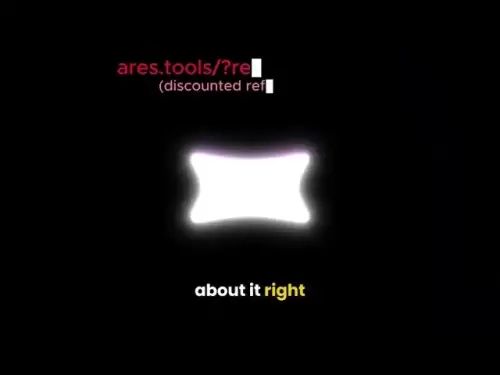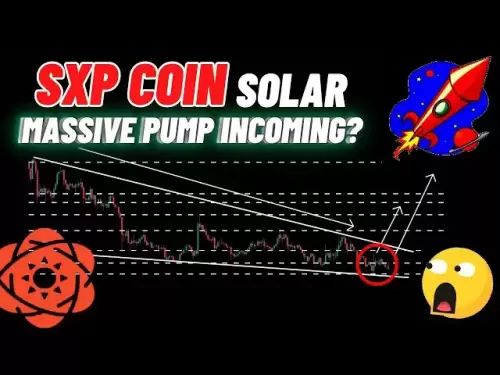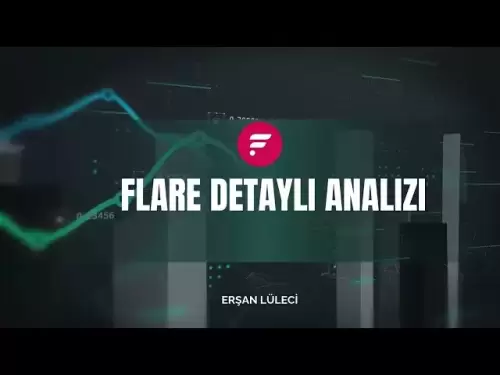-
 Bitcoin
Bitcoin $117500
2.04% -
 Ethereum
Ethereum $3759
3.02% -
 XRP
XRP $3.171
3.30% -
 Tether USDt
Tether USDt $1.000
0.03% -
 BNB
BNB $782.4
2.52% -
 Solana
Solana $187.2
5.62% -
 USDC
USDC $0.0000
0.02% -
 Dogecoin
Dogecoin $0.2380
5.26% -
 TRON
TRON $0.3175
1.07% -
 Cardano
Cardano $0.8227
4.03% -
 Hyperliquid
Hyperliquid $44.50
5.44% -
 Sui
Sui $4.020
10.07% -
 Stellar
Stellar $0.4396
6.28% -
 Chainlink
Chainlink $18.32
4.55% -
 Hedera
Hedera $0.2628
10.71% -
 Bitcoin Cash
Bitcoin Cash $554.8
4.90% -
 Avalanche
Avalanche $24.20
4.60% -
 Litecoin
Litecoin $113.7
2.31% -
 Shiba Inu
Shiba Inu $0.00001413
5.99% -
 UNUS SED LEO
UNUS SED LEO $8.984
0.11% -
 Toncoin
Toncoin $3.326
7.22% -
 Ethena USDe
Ethena USDe $1.001
0.00% -
 Uniswap
Uniswap $10.49
4.56% -
 Polkadot
Polkadot $4.092
4.02% -
 Monero
Monero $326.6
1.30% -
 Dai
Dai $1.000
-0.01% -
 Bitget Token
Bitget Token $4.570
2.49% -
 Pepe
Pepe $0.00001267
5.10% -
 Aave
Aave $297.3
3.10% -
 Cronos
Cronos $0.1344
4.10%
How to identify the short-term top opportunity formed by the 5-minute RSI overbought + 15-minute hanging neckline?
A 5-minute RSI overbought signal (above 70) combined with a 15-minute hanging man and neckline break increases the likelihood of a short-term top, especially with confluence in timing and rising volume.
Jul 24, 2025 at 07:35 pm
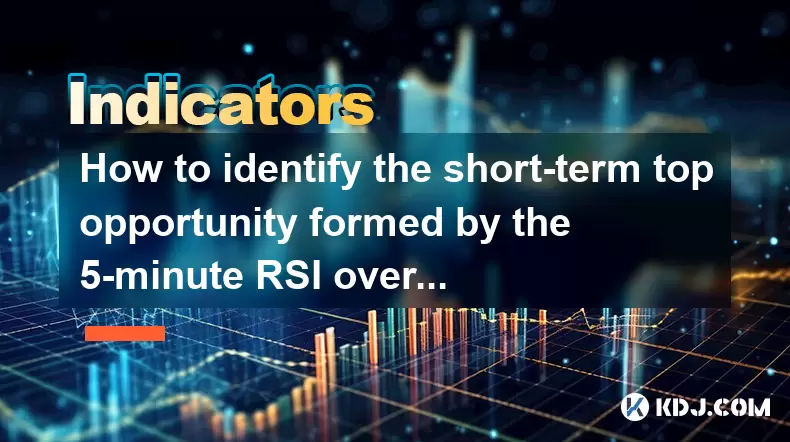
Understanding the 5-Minute RSI Overbought Signal
The Relative Strength Index (RSI) is a momentum oscillator that measures the speed and change of price movements. When applied to a 5-minute chart, the RSI becomes a highly sensitive tool for detecting short-term momentum shifts. A reading above 70 is typically classified as overbought, suggesting that the asset may be overvalued in the immediate term and due for a pullback. However, an overbought signal alone does not guarantee a reversal—it merely indicates that upward momentum is strong and could be unsustainable.
To use the 5-minute RSI effectively, traders should ensure the indicator is set to the default period of 14, unless otherwise optimized through backtesting. When the RSI crosses above 70 and remains there for two or more consecutive candles, it strengthens the overbought condition. It is critical to observe whether the price is making higher highs while the RSI fails to confirm—this divergence can signal weakening momentum. For example, if the price reaches a new peak but the RSI forms a lower high, it may indicate that buyers are losing control, increasing the probability of a short-term top.
Recognizing the 15-Minute Hanging Man and Neckline Formation
The hanging man is a bearish reversal candlestick pattern that typically appears at the end of an uptrend. On the 15-minute chart, this pattern consists of a candle with a small real body near the top, a long lower shadow (at least twice the length of the body), and little to no upper shadow. The presence of this candle suggests that sellers pushed the price down significantly during the period, but buyers managed to push it back up—revealing underlying weakness.
The neckline comes into play when analyzing the broader price structure. After the hanging man forms, the neckline is drawn by connecting the most recent swing lows before and after the pattern. This line acts as a support level. A valid bearish signal occurs when the price closes below the neckline on the 15-minute chart. The combination of the hanging man and a confirmed break of the neckline increases the reliability of a potential reversal. Traders should measure the distance from the hanging man’s high to the neckline to estimate a potential price target for the downside move.
Aligning Timeframes: 5-Minute RSI and 15-Minute Chart Confluence
For a high-probability short-term top, the signals from both timeframes must align temporally. This means the 5-minute RSI overbought condition should occur at or near the same time as the formation of the 15-minute hanging man and neckline break. To verify confluence:
- Monitor the 5-minute chart for RSI crossing above 70 and showing signs of momentum exhaustion.
- Simultaneously, check the 15-minute chart to see if a hanging man candle is forming.
- Wait for the 15-minute candle to close below the neckline to confirm the bearish breakout.
- Ensure that volume increases on the breakdown candle, which adds credibility to the sell signal.
When both indicators trigger within a few minutes of each other, the probability of a short-term top increases significantly. For example, if the 5-minute RSI hits 74 at the same time the 15-minute candle closes below the neckline with strong volume, this confluence suggests immediate selling pressure may emerge.
Executing the Short Trade: Entry, Stop-Loss, and Position Sizing
Once the confluence is confirmed, the next step is to enter the trade with precision. The optimal entry point is on the close of the 15-minute candle that breaks the neckline, especially if the 5-minute RSI remains above 70 or begins to turn downward. Traders can use a market order or a limit order slightly below the close to ensure execution.
- Set a stop-loss just above the high of the hanging man candle. This level represents the point where the bearish thesis would be invalidated.
- Determine position size based on risk tolerance. For instance, if your account size is $10,000 and you are willing to risk 1% ($100), calculate the number of contracts or coins based on the distance between entry and stop-loss.
- Use a risk-reward ratio of at least 1:2. If the stop-loss is 10 cents away, the take-profit should be set at a level 20 cents below entry, often aligned with prior support or Fibonacci levels.
Avoid entering before confirmation—premature entries based on incomplete candles can lead to false signals and losses.
Monitoring Price Action After Entry
After entering the trade, continuous monitoring is essential. Watch for continuation candles on the 15-minute chart that close lower, confirming bearish momentum. On the 5-minute chart, observe whether the RSI begins to decline from overbought territory—ideally breaking below 70 and continuing toward 50 or lower. A rapid drop in RSI supports the validity of the short position.
Additionally, check for support levels where price might pause or reverse. If price approaches a known support zone and shows signs of consolidation (e.g., doji candles or narrowing range), consider adjusting the take-profit or trailing the stop-loss. Volume should remain elevated during the downtrend; decreasing volume may suggest weakening momentum and a potential pullback.
Avoid exiting solely based on emotion. Stick to the predefined risk parameters unless new data invalidates the setup.
Frequently Asked Questions
What if the 5-minute RSI is overbought but the 15-minute chart doesn’t show a hanging man?
In this case, the signal lacks confluence. An overbought RSI in isolation is not sufficient for a reliable short. Wait for a valid bearish candlestick pattern on the higher timeframe before considering a trade.
Can the neckline be horizontal or does it need to be sloping?
The neckline can be horizontal, ascending, or descending. What matters is that it connects two swing lows and acts as dynamic support. A break below any of these variations can serve as a valid trigger, provided other conditions are met.
How long should I hold the short position after entry?
Hold the position until the take-profit level is reached or the stop-loss is hit. Do not extend the trade based on hope. If price shows strong reversal signals—such as a bullish engulfing candle on the 15-minute chart near support—consider exiting early to preserve profits.
Is this strategy applicable to all cryptocurrencies?
Yes, the strategy can be applied to major cryptocurrencies like BTC, ETH, and BNB, provided they have sufficient volatility and liquidity. Avoid low-volume altcoins, as their price action may be erratic and less predictable, increasing the risk of false signals.
Disclaimer:info@kdj.com
The information provided is not trading advice. kdj.com does not assume any responsibility for any investments made based on the information provided in this article. Cryptocurrencies are highly volatile and it is highly recommended that you invest with caution after thorough research!
If you believe that the content used on this website infringes your copyright, please contact us immediately (info@kdj.com) and we will delete it promptly.
- Pi Coin, Wallet Features, and Coinbase: What's the Buzz?
- 2025-07-26 18:30:12
- Worldcoin, Punisher Coin, and the Meme Coin Mania: What's the Haps?
- 2025-07-26 18:30:12
- Dogecoin Trajectory: From Meme to Mainstream and Beyond in Crypto
- 2025-07-26 17:10:14
- LasMeta, Pyth Network, NovaDrop NFTs: Decoding the Buzz
- 2025-07-26 16:30:12
- SHIB Long/Short: Riding the Shiba Inu Waves Like a Pro
- 2025-07-26 17:50:12
- VeChain (VET) Price Prediction: Will VET Reach $0.040 in August 2025?
- 2025-07-26 16:50:12
Related knowledge

What does it mean that the rebound is blocked after the moving average is arranged in a short position for the first time?
Jul 26,2025 at 10:51am
Understanding the Short-Term Moving Average ConfigurationWhen traders refer to a 'short position arrangement' in moving averages, they are describing ...

What does it mean when the price rises along the 5-day moving average for five consecutive days?
Jul 26,2025 at 08:07am
Understanding the 5-Day Moving Average in Cryptocurrency TradingThe 5-day moving average (5DMA) is a widely used technical indicator in cryptocurrency...

What does it mean when the price breaks through the 60-day moving average with a large volume but shrinks the next day?
Jul 26,2025 at 06:01am
Understanding the 60-Day Moving Average in Cryptocurrency TradingThe 60-day moving average (60DMA) is a widely used technical indicator in the cryptoc...

What does the sudden rise of ADX in DMI accompanied by +DI crossing -DI indicate?
Jul 26,2025 at 01:21pm
Understanding the DMI and Its Core ComponentsThe Directional Movement Index (DMI) is a technical analysis tool used to determine the presence and stre...
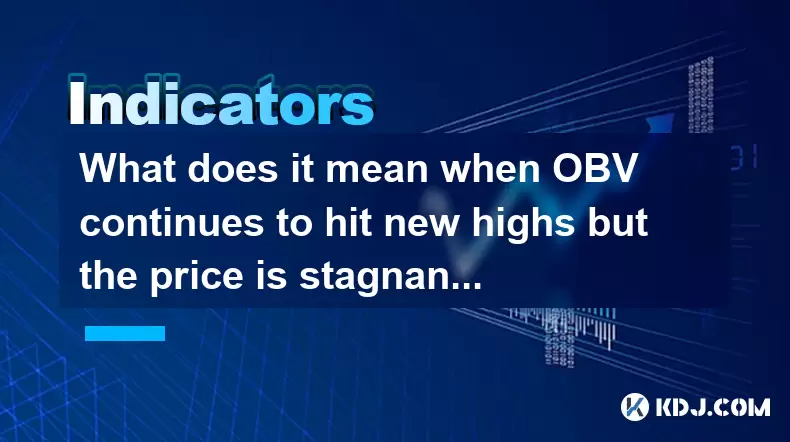
What does it mean when OBV continues to hit new highs but the price is stagnant?
Jul 26,2025 at 09:57am
Understanding the On-Balance Volume (OBV) IndicatorThe On-Balance Volume (OBV) is a technical analysis indicator that uses volume flow to predict chan...
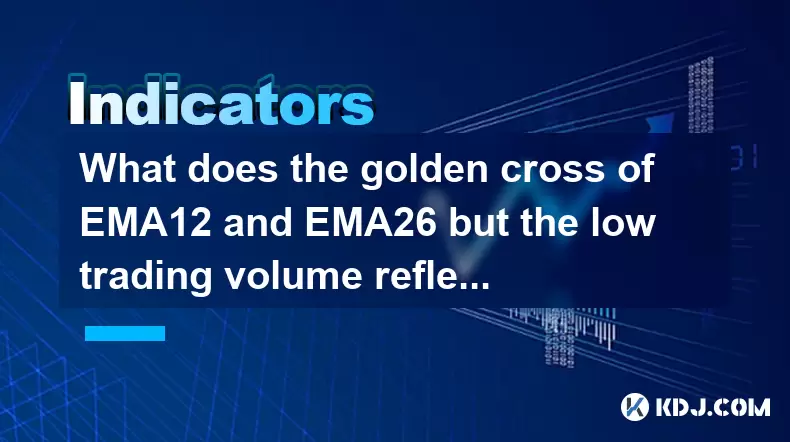
What does the golden cross of EMA12 and EMA26 but the low trading volume reflect?
Jul 26,2025 at 06:44am
Understanding the Golden Cross in EMA12 and EMA26The golden cross is a widely recognized technical indicator in the cryptocurrency market, signaling a...

What does it mean that the rebound is blocked after the moving average is arranged in a short position for the first time?
Jul 26,2025 at 10:51am
Understanding the Short-Term Moving Average ConfigurationWhen traders refer to a 'short position arrangement' in moving averages, they are describing ...

What does it mean when the price rises along the 5-day moving average for five consecutive days?
Jul 26,2025 at 08:07am
Understanding the 5-Day Moving Average in Cryptocurrency TradingThe 5-day moving average (5DMA) is a widely used technical indicator in cryptocurrency...

What does it mean when the price breaks through the 60-day moving average with a large volume but shrinks the next day?
Jul 26,2025 at 06:01am
Understanding the 60-Day Moving Average in Cryptocurrency TradingThe 60-day moving average (60DMA) is a widely used technical indicator in the cryptoc...

What does the sudden rise of ADX in DMI accompanied by +DI crossing -DI indicate?
Jul 26,2025 at 01:21pm
Understanding the DMI and Its Core ComponentsThe Directional Movement Index (DMI) is a technical analysis tool used to determine the presence and stre...

What does it mean when OBV continues to hit new highs but the price is stagnant?
Jul 26,2025 at 09:57am
Understanding the On-Balance Volume (OBV) IndicatorThe On-Balance Volume (OBV) is a technical analysis indicator that uses volume flow to predict chan...

What does the golden cross of EMA12 and EMA26 but the low trading volume reflect?
Jul 26,2025 at 06:44am
Understanding the Golden Cross in EMA12 and EMA26The golden cross is a widely recognized technical indicator in the cryptocurrency market, signaling a...
See all articles





















